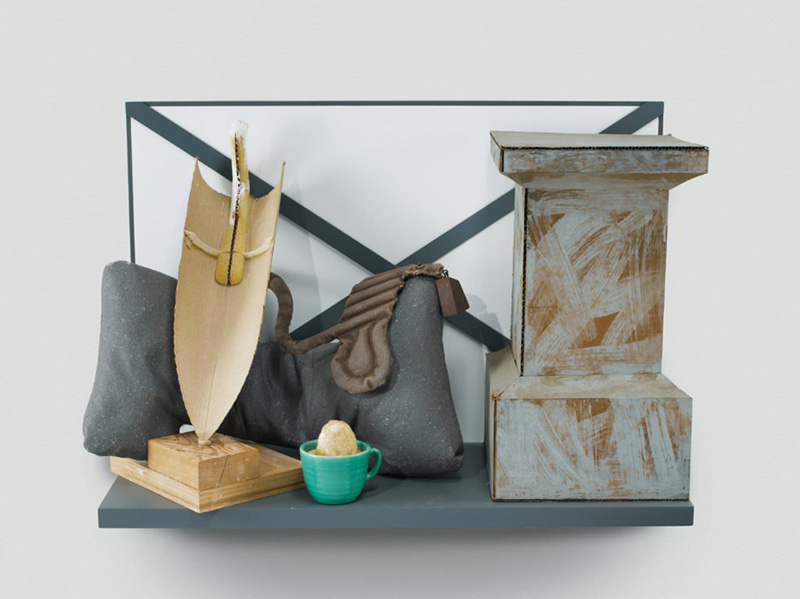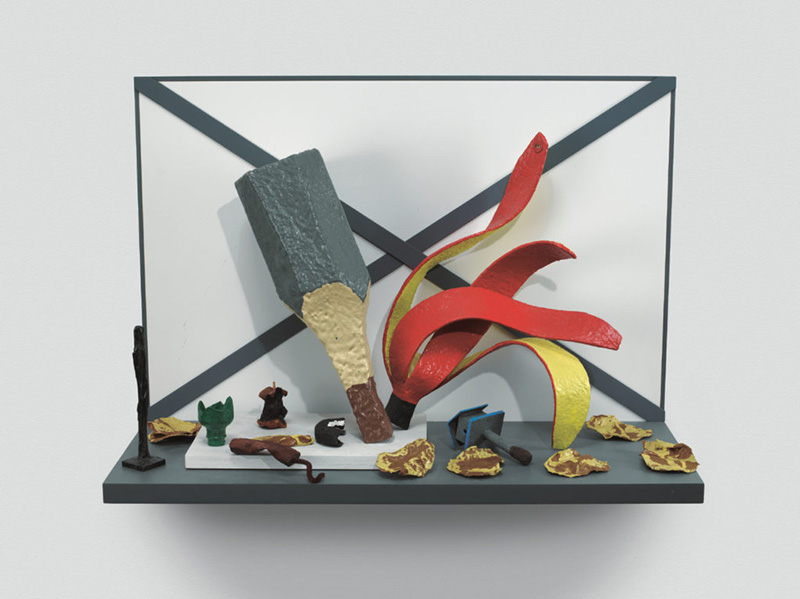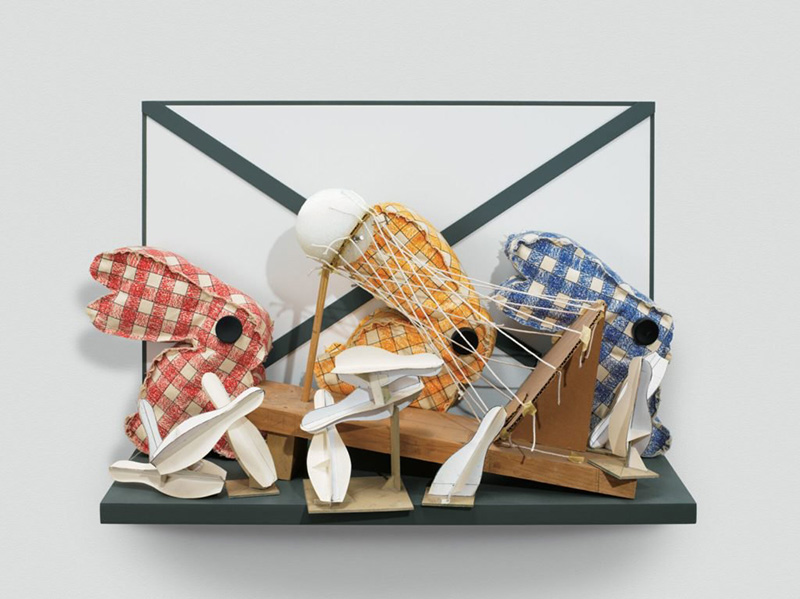ART CITIES:N.York-Claes Oldenburg
 Working in collaboration since 1976, husband and wife artists Claes Oldenburg and Coosje van Bruggen redefined the nature of outdoor sculpture in public spaces. These works have been installed all over the world and have become iconic images of large-scale public art. Their relationship grew into what Oldenburg called “a unity of opposites”.
Working in collaboration since 1976, husband and wife artists Claes Oldenburg and Coosje van Bruggen redefined the nature of outdoor sculpture in public spaces. These works have been installed all over the world and have become iconic images of large-scale public art. Their relationship grew into what Oldenburg called “a unity of opposites”.
By Dimitris Lempesis
Photo: Pace Gallery Archive
The exhibition “Claes Oldenburg: Shelf Life” includes 15 mixed-media sculptures and a series of rotating “Geometric Mouse shopping bags”. The exhibition draws significant inspiration from a number of Oldenburg’s most iconic exhibitions, particularly “The Mouse Museum” (1972) originally created for documenta 5 and the pioneering Pop art exhibition “The Store” (1961). The new works recontextualize small-scale sculptures created by Claes Oldenburg and Coosje van Bruggen in diverse materials as well as found objects from the artist’s shelves. Oldenburg organized the objects on a set of custom-made shelves inspired by a particular standard office shelf unit in his studio, arranging, rearranging, and recreating them until the pieces found their proper place with one another. Taken together, these sculptures represent a compendium of the ideas and objects that have resonated throughout Oldenburg’s life and practice, now revealed in completely new relationships. The Store: In 1961 Claes Oldenburg presented a new body of work whose subject matter he had culled from the clothing stores, delis, and bric-a-brac shops that crowded the Lower East Side. The earliest “Store” sculptures, which debuted in spring 1961 at the Martha Jackson Gallery, at 32 East Sixty-Ninth Street, are wall-mounted reliefs depicting everyday items like shirts, dresses, cigarettes, sausages, and slices of pie. Oldenburg made them from armatures of chicken wire overlaid with plaster-soaked canvas, using enamel paint straight from the can to give them a bright color finish. In December 1961, Oldenburg opened The Store in the rented storefront at 107 East Second Street that served as his studio, which he called the Ray Gun Manufacturing Company. A fully elaborated manifestation of the project that he had begun months earlier, The Store conflated two disparate types of commerce: the sale of cheap merchandise and the sale of serious art. Oldenburg packed more than one hundred objects into the modestly sized room, setting previously exhibited reliefs alongside new, primarily freestanding sculptures. Everything was available for purchase, with prices starting at $21.79 up to $499.99. After The Store closed, on January 31, 1962, Oldenburg used the space to stage a series of performances collectively titled Ray Gun Theater. The Mouse Museum: In 1965, soon after Oldenburg moved his studio to a loft on Fourteenth Street in Manhattan, he positioned various objects from his collection on a large storage unit and called it the “museum of popular art, n.y.c.” Although private, the display revealed the artist’s egalitarian attitude: both artworks and knickknacks were valid candidates for inclusion in the “museum”. Seven years later, in 1972, Oldenburg formalized this project and made it public at Documenta, in Kassel. “Mouse Museum” includes 385 objects selected from his collection of more than a thousand items, housed in a structure based on “Geometric Mouse” a recurring motif in his drawings, prints, and sculptures.
Info: Pace Gallery, 537 West 24th Street, New York, Duration: 13/10-11/11/17, Days & Hours: Tue-Sat 10:00-18:00, www.pacegallery.com


